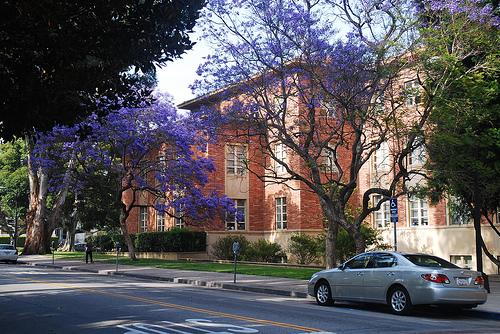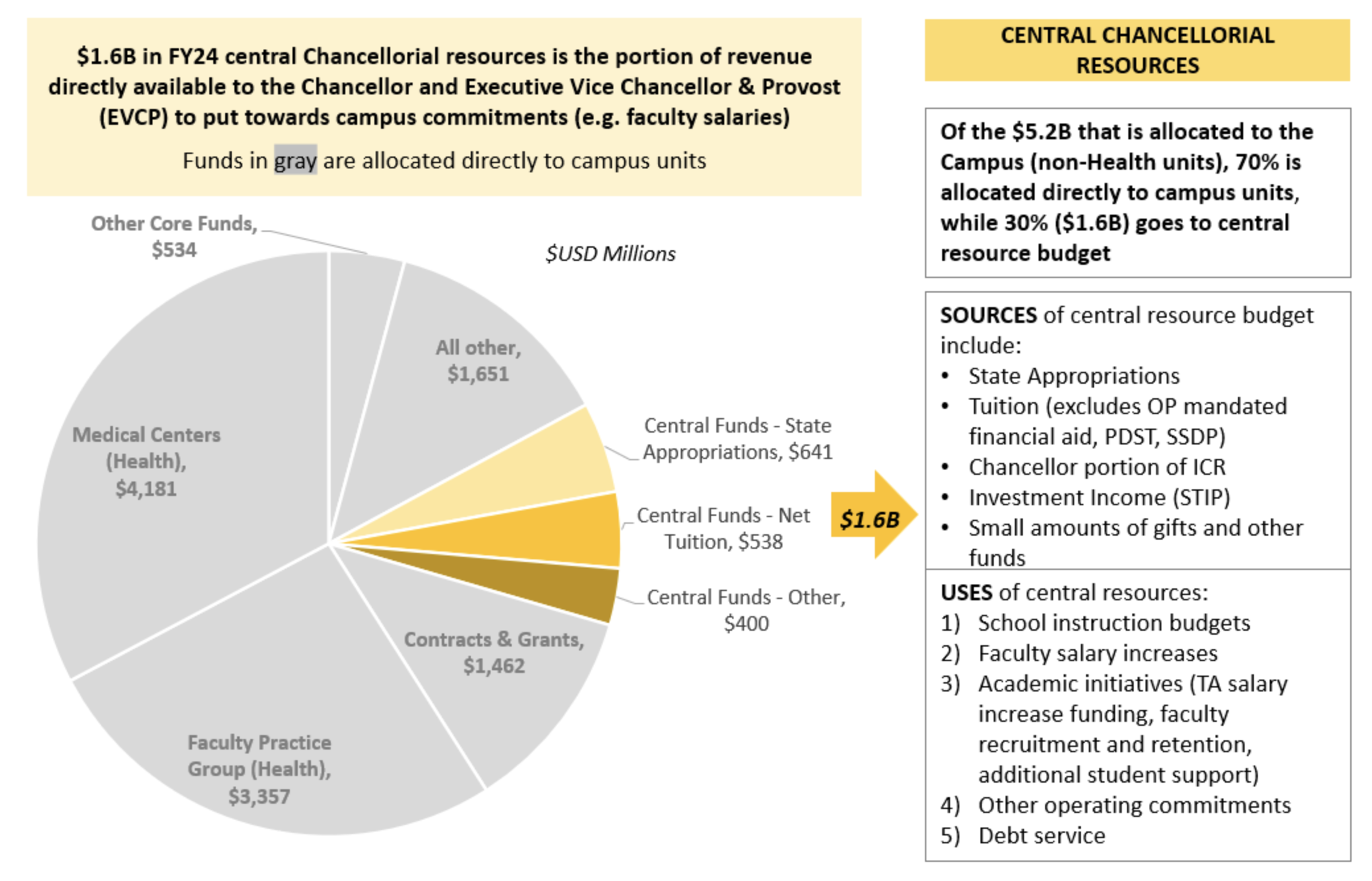Stewarding resources in support of UCLA’s mission: the creation, dissemination, preservation, and application of knowledge for the betterment of our global society.
Strategic Financial Leadership
Under the leadership of Chancellor Julio Frenk, UCLA has introduced a more strategic, values-driven approach to financial planning. Guided by his aspirational goals — to make UCLA more connective, impactful and exemplary— the Chancellor sets annual budget priorities that align with the university’s academic mission and long-term sustainability.
Working closely with the Executive Vice Chancellor and Provost (EVCP) and the Vice Chancellor/Chief Financial Officer (VC/CFO), the Chancellor leads a campuswide process that emphasizes transparency, accountability, and shared governance. The result is a budget that reflects UCLA’s enduring commitment to academic excellence, equity, and responsible stewardship of public and private resources.

Navigating UCLA’s Financial Reality
UCLA faces a structural budget deficit that has developed over many years, compounded by shifting federal and state funding, inflationary pressures, and rising costs across higher education. Recognizing this reality, the Chancellor has charged university leadership to confront these challenges openly and collaboratively.
Through regular updates, open dialogue, and data-informed decision-making, UCLA is reshaping its financial framework to ensure long-term stability. The Chancellor’s leadership has anchored this effort in shared values — academic rigor, inclusivity and fiscal integrity — so that every financial decision advances the university’s mission.
UCLA Budget Overview
UCLA’s budget is large and complex, reflecting the scope of our work in education, research, and public service. This overview helps our community understand how campus revenues and expenditures come together to support those goals.
A key component is Central Chancellorial Resources, representing roughly 12% of UCLA’s total revenue. These funds are directed by the Chancellor and EVCP to support universitywide priorities and shared needs.
REVENUE OVERVIEW (FY24)
UCLA’s total revenue for FY24 was $12.8 billion:
- UCLA Health: $7.5 billion (59%)
- Campus: $5.2 billion (41%)
UCLA's Budget Includes a Variety of Sources

Budget Sources Image Description
Within this total, Central Chancellorial Resources accounted for $1.6 billion (12%), derived from:
- State appropriations: $641 million (excludes one-time designations)
- Tuition: $538 million (net of OP-mandated financial aid)
- Other sources: $400 million (including indirect cost recovery, investment income, and philanthropic support)
Chancellorial Resources Represent 12% of Total Revenue

Central Chancellorial Resources Image Description
USES OF CENTRAL RESOURCES
These central resources are allocated at the direction of the Chancellor and EVCP to sustain UCLA’s academic excellence and institutional priorities, including:
- Direct allocation to Schools, Research and Administrative Organizations($1,230M)
- Faculty and staff salary programs ($60M)
- Academic and research initiatives such as graduate support, faculty recruitment, and research investment ($160M)
- Student financial aid beyond UC-required levels ($60M)
- Systemwide contributions to UCOP and UCPath ($80M)
- Campus operating commitments ($145M)
- Capital projects and debt service ($71M)
Campus Budget Process
The Chancellor’s leadership has shaped a more transparent and integrated budget process—one that brings together academic, administrative, and financial leaders to align resources with institutional priorities.
Each fall, the Chancellor and senior leadership establish campuswide budget priorities for the year ahead. These priorities guide discussions led by the VC/CFO and Academic Planning and Budget (APB), with input from deans, vice chancellors, faculty representatives, and finance leads across UCLA.
This process includes multiple touchpoints for dialogue and reflection, ensuring that budget decisions are coordinated, data-driven, and consistent with UCLA’s mission and values.
BUDGET PROCESS TIMELINE
- November: Campus budget kickoff and distribution of planning materials
- Nov–Jan: Units compile budget materials with APB analyst support
- Late January: Budget submissions due
- Feb–Mar: Budget conferences with EVCP, VC/CFO, and APB
- Apr–May: Analysis and review by UCOP and senior leadership
- June: Final budget approvals communicated by the Chancellor and EVCP
- September: Fall budget check-in with unit leaders and finance officers
Looking Ahead
Through clear priorities and shared accountability, Chancellor Frenk has positioned the budget not merely as a balance sheet but as a strategic instrument — one that directs UCLA’s collective energy toward long-term sustainability, innovation and public impact.
By linking resources to mission, the university continues to advance its role as a global leader in education, discovery and service to society.
